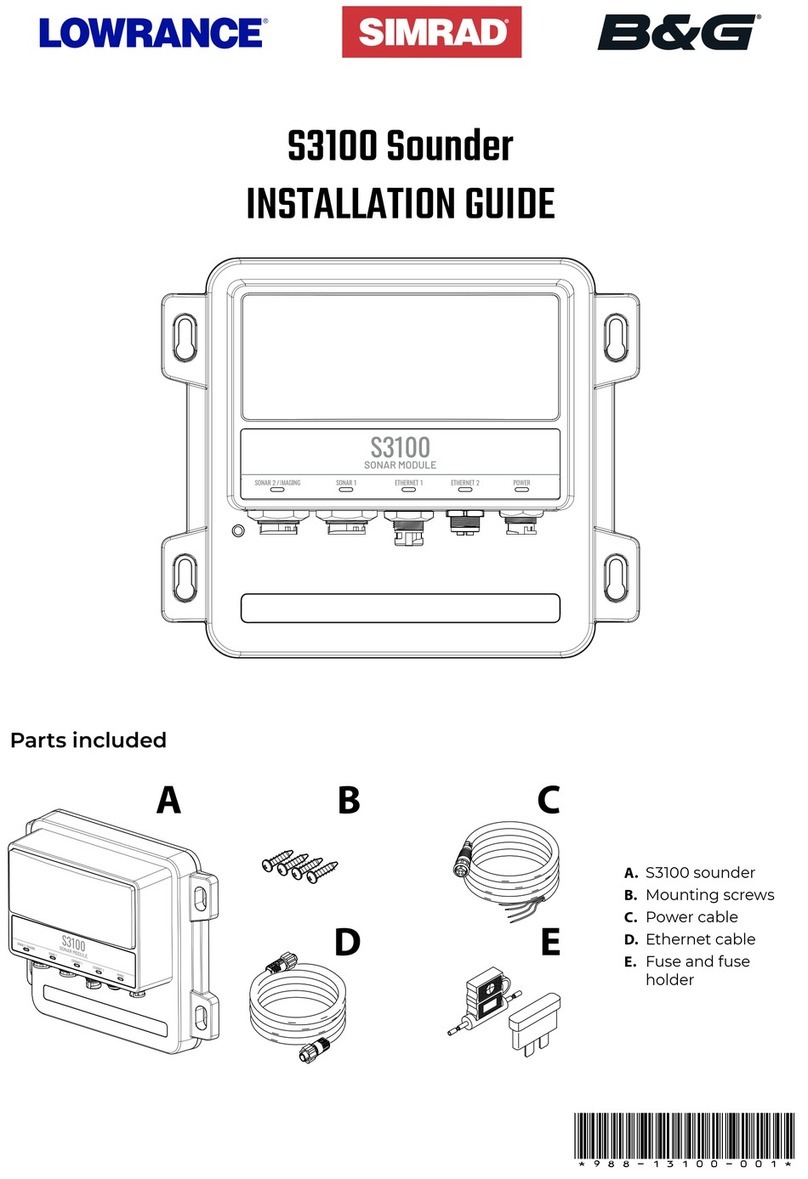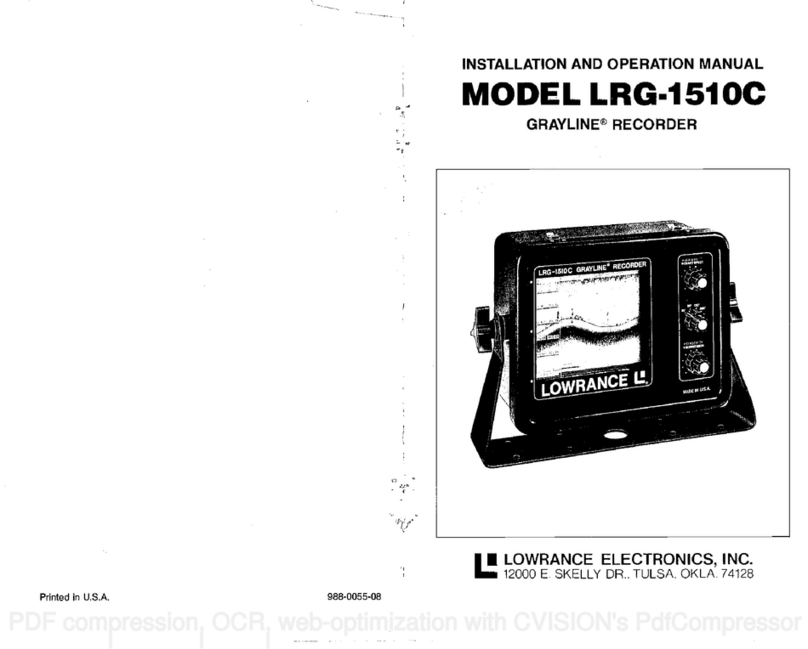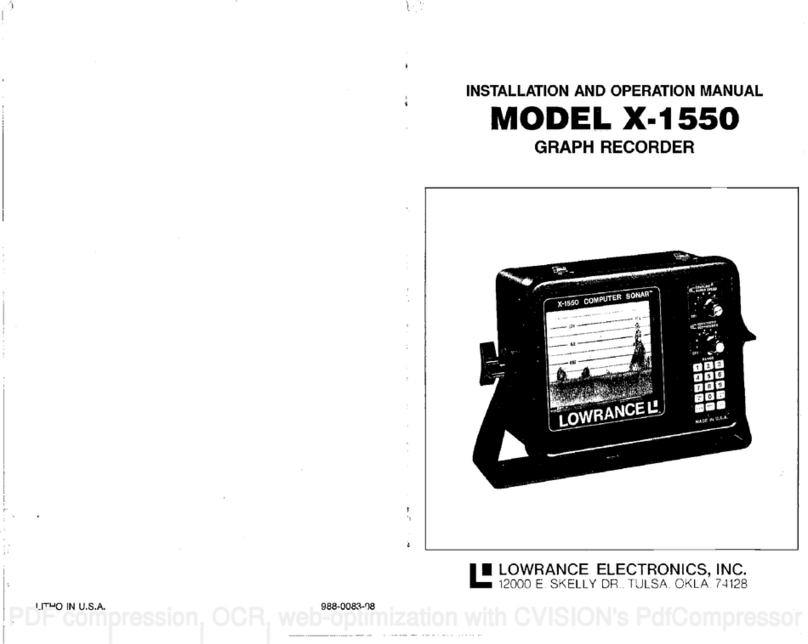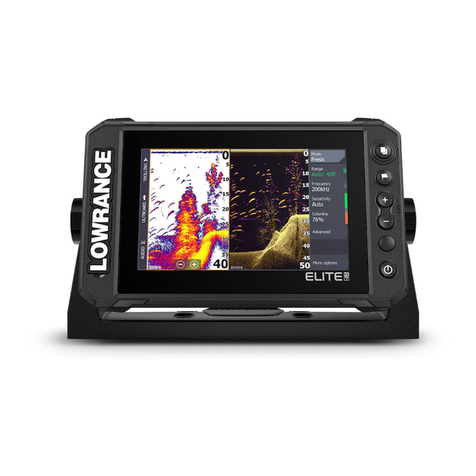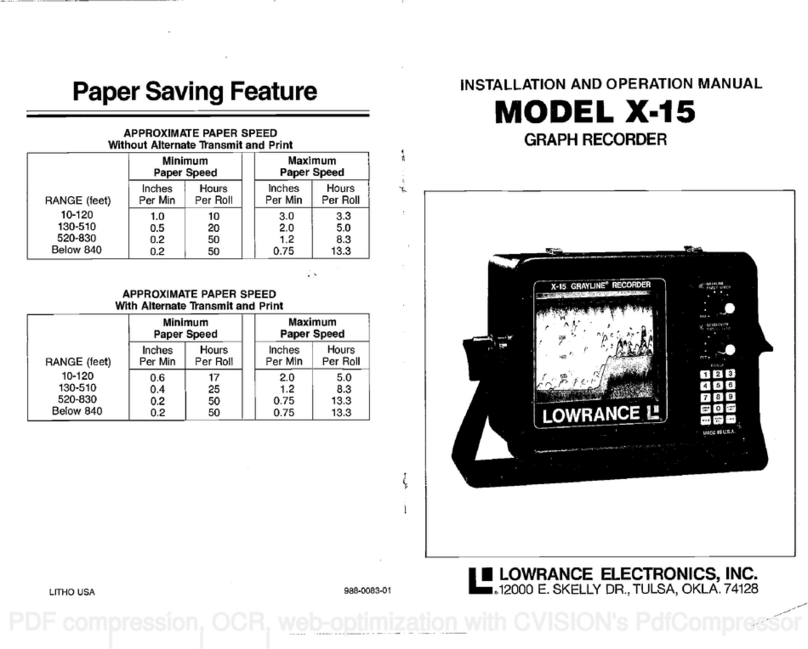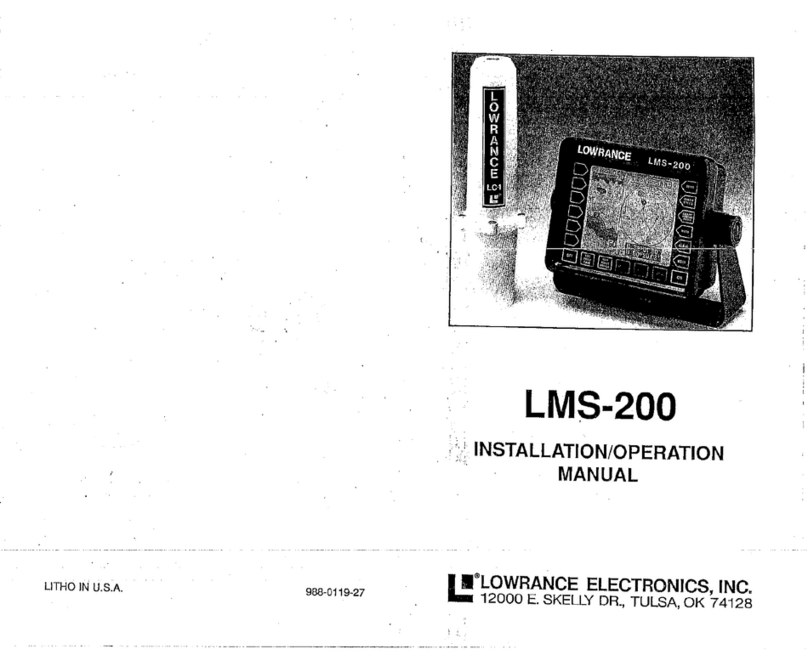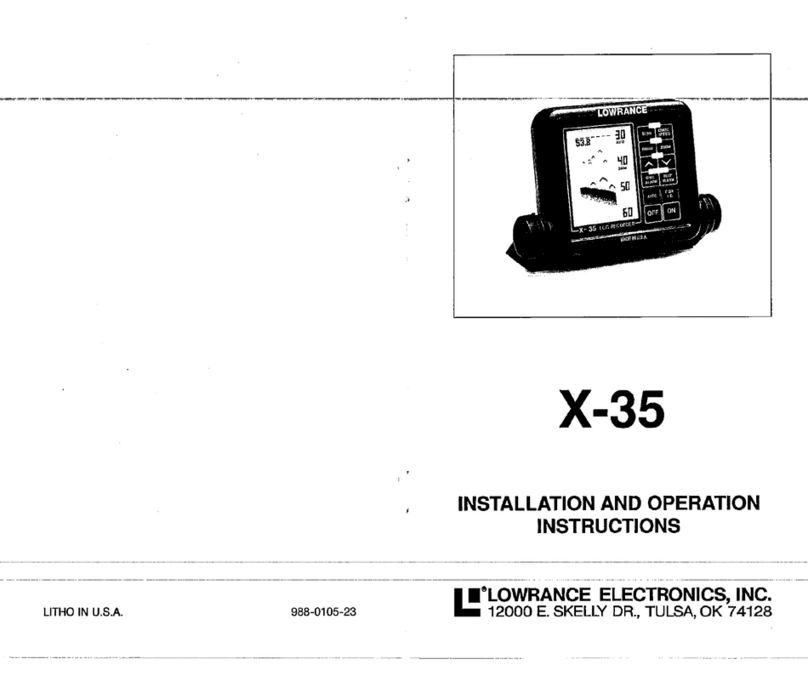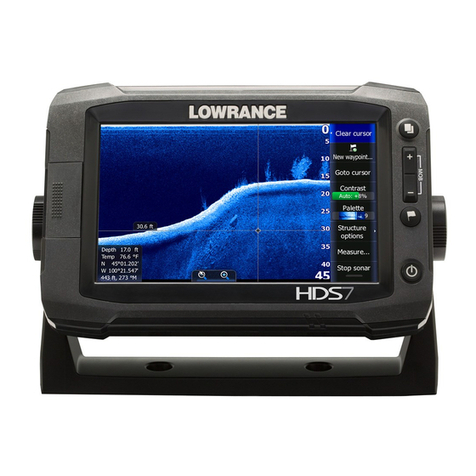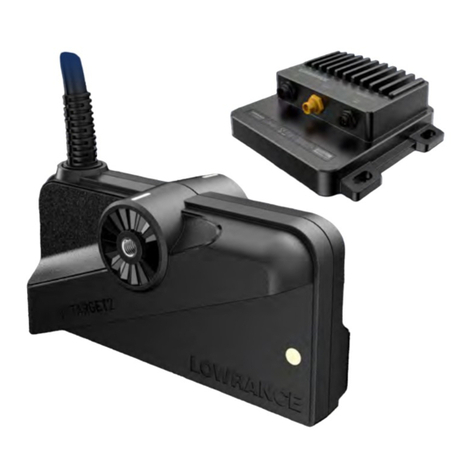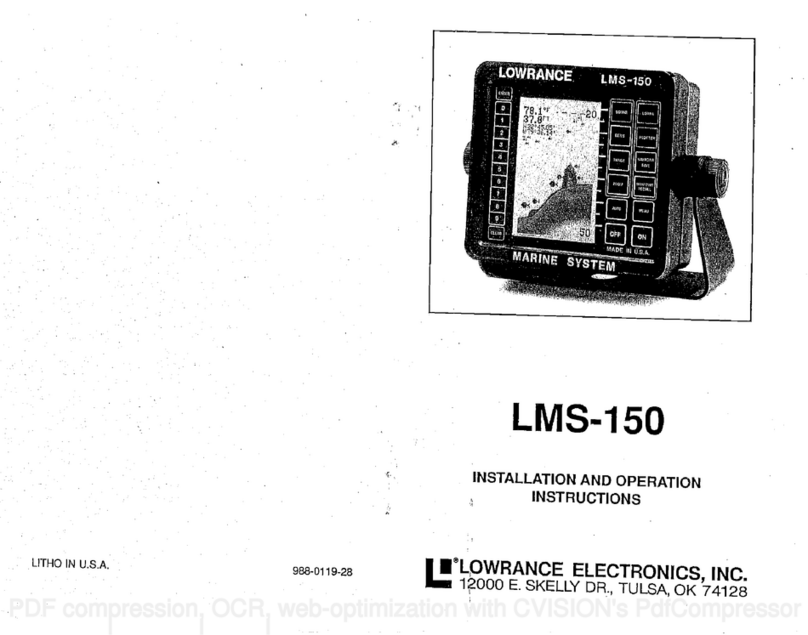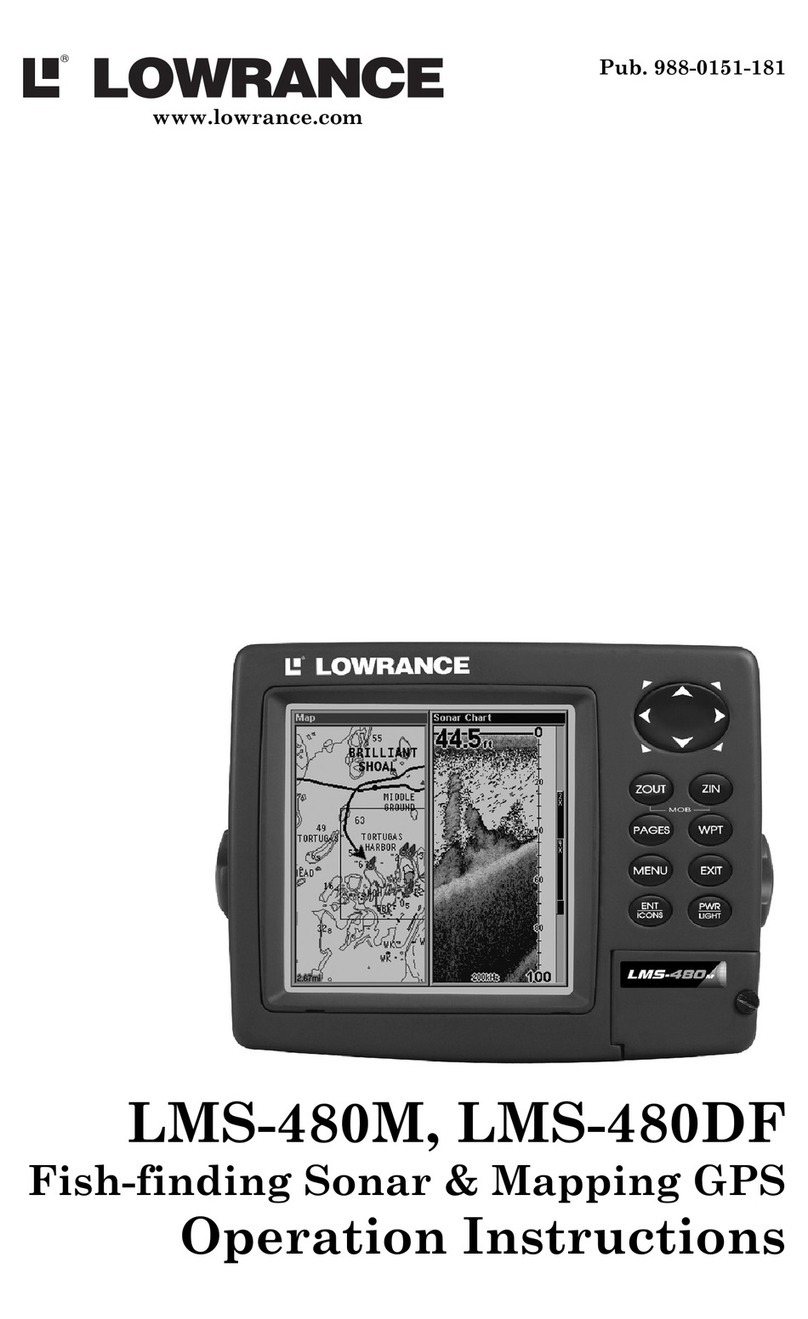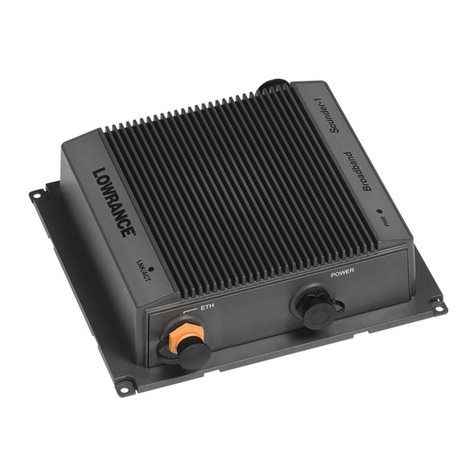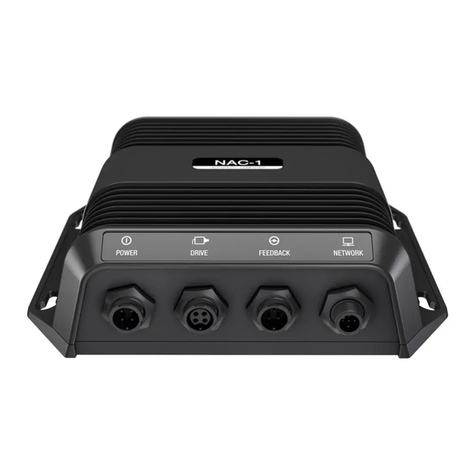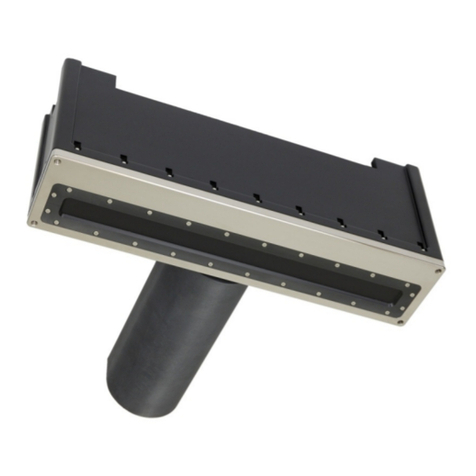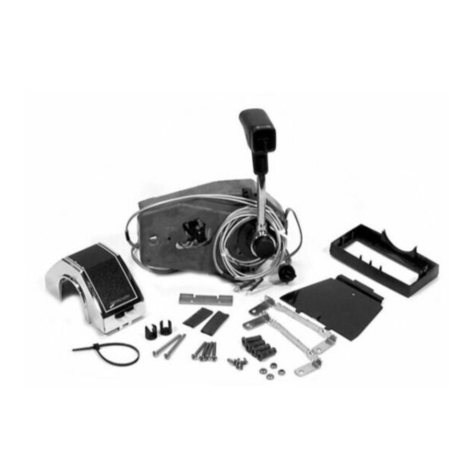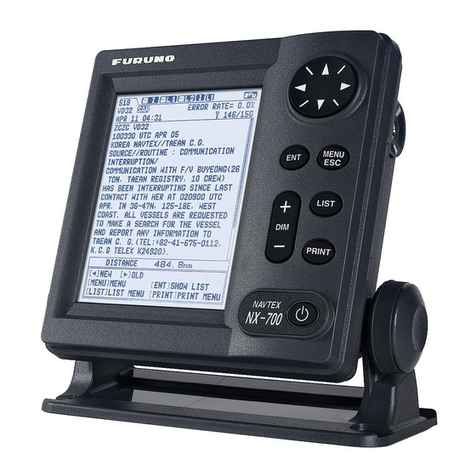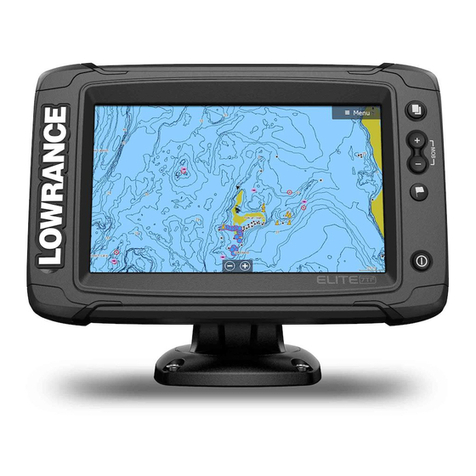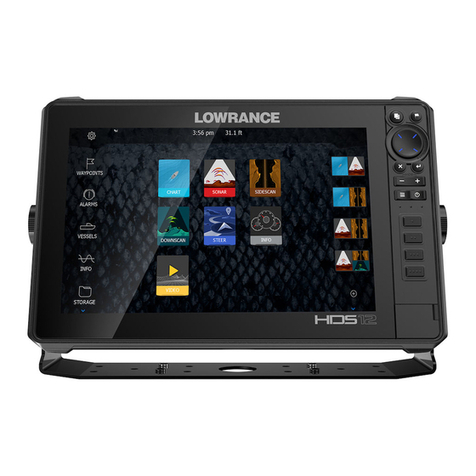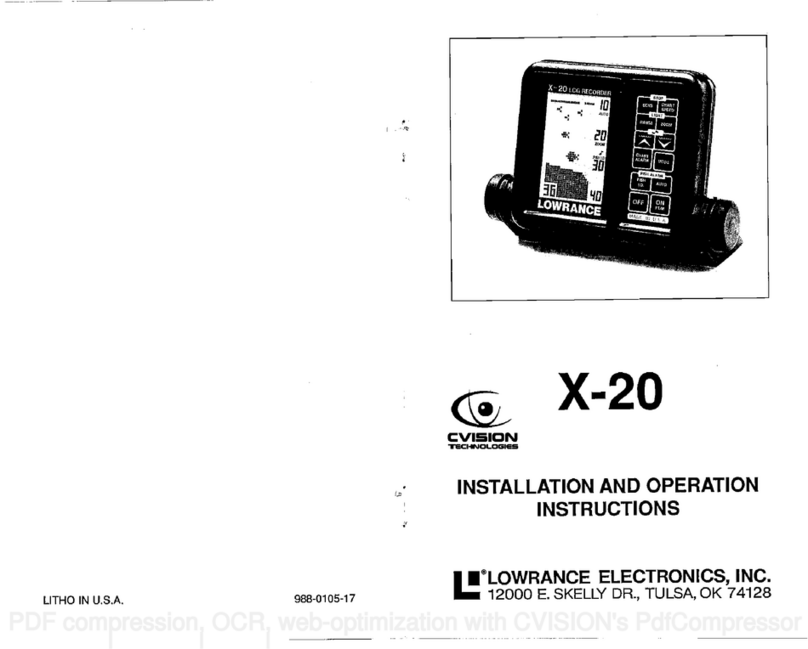
WHAT IT IS
'Sonar"isanabbreviation meaning"sound navigation andranging." Itwas
developed asameans oftrackingenemysubmarines during WorldWarII.
Sound—whentransmitted through water — travelsatapproximately4800
feet per second as compared to1100through air.
SOUND TRAVELS
MORE THAN4TIMES
_____
FASTER IN WATER AS IT DOES IN AIR
)DD)flflDflflDflflflfl)
)fl)flfll
Fig,1 4800 FEET PERSECOND IN WATER
Insimple
terms,
anelectrical impulse isconvertedintoasound wave and
transmitted intothewater.Whenthe
wave strikesanobstacle, it rebounds.
Since thespeed ofsound in wateris known — and constant — thetime
betweenthetransmitted signalandthe
receivedechocanbemeasuredand
thedistance totheobstacle determined.Ap electronic sonarunitcan both
send and receivethesoundwaves, aswellastime,measure, and record
them.
PRINCIPLE OFSONAR
TRANSMITTED 1
GNAL
AND RECEIVED I
'ECHO" L((((((((((w((K K K ( (
- ---—- SIGNAL
SENTBYLOCATOR BOUNCES BACK FROM
TARGEt TIME LAPSE INDICATES DISTANCE TO TARGET
Fig,2
The Lowrance Model LRG-1500A/M graph recorder is a compact unit
specifically designed forsport
fishermen. Ithas900Wattstypical peak-to-
peakpower,(112
wattsRMS)
features
easy
toreadstraight line recordin'gs,
hasa "gray line"capability, and provides easy-to-read graphs
withsuch
claritythat evenasingle fish hovering just nineinches offthe bottom is
easilyidentified.
Full control of the system is at your finger tips to meet thechanging
demands ofvaryingbottom conditions, waterdepth and boat speed. You
can select the unit'ssensitivity selling, suppression level, depth range,
paperspeed,andthe
degree of"grayline"usedtoenhance therecorded
information.Thepatented LowranceVariable
suppression system
not
only
filtersoutfalsesignalswithout
distqrting thereal ones, butissynchronized
Withthe
graylinefunction toprovide)clearsignals underallconditions. The
permanent recordofwhat
your
sonar
has 'seen"isrolled and storedinside
thecase.
2
DOSECTION
Do carry aspare fuse,stylusbelt, and rollofpaper.
Do usethetape fromanew rollorpapertoattach it tothetake-upspool.
Do usethe
empty cardboardcorefromthelast rollofpaper
onthe
take-up
post.
Do carry a pencilto make notes onthepaper.
Do keep
therecorded graphs forfuture reference.
Do cleanthe stylusbelt and wheels with alcohol aftereveryfive rolls of
paper.
DON'TSECTION
DON'T OPEN THECASE WHEN THEUNIT ISON.
Don't
pull theplaten assembly down when thestylus is atthe front.
Don't
store anyobjectsinsidethecaseor behind theviewing
door.
Don't
forgettotapethe paper to the
take-up
core.
Don'trotate thestylusbeltup.
Don'tuseoily cloths, strong
solvents orabrasive cleansers.
TROUBLESHOOTING
SYMPTOM WHATTO DO
A. On/Off switch is "ON", but the
stylus and paper don't move
B. On/Off switch is "ON", have
zeromark, butnoechoes orbot-
tomsignals
D. Recordermarksare faintordim D. Cleanviewingdoor;replace the
stylus
E. Recordedmarksareveryheavy;
paperistornby stylus
C. Theunit isON, but paper does
notmove
A. Check fuse; check connections
at battery; tighten powercord
connector
B. Be sure the transducer is plug-
ged intothe unitandthe trans-
ducerisincontactwiththewater
C. Tape Paper tocardboard spool
ontake-up post
E. Bendthe
stylusslightly
toreduce
pressure on paper.
23
PDF compression, OCR, web-optimization with CVISION's PdfCompressor


